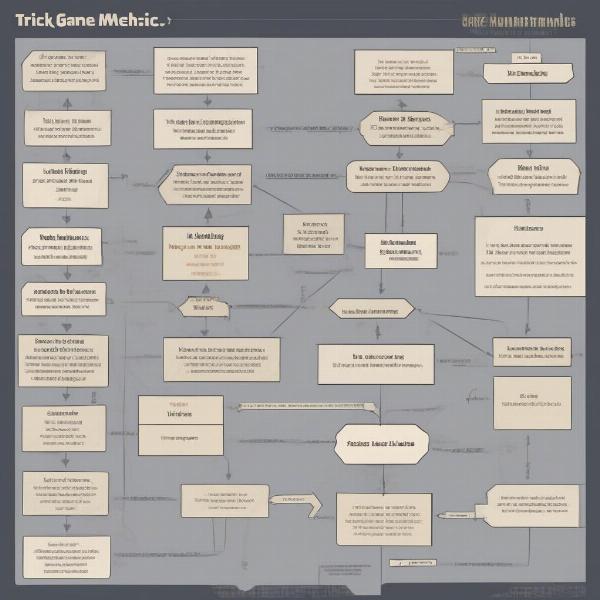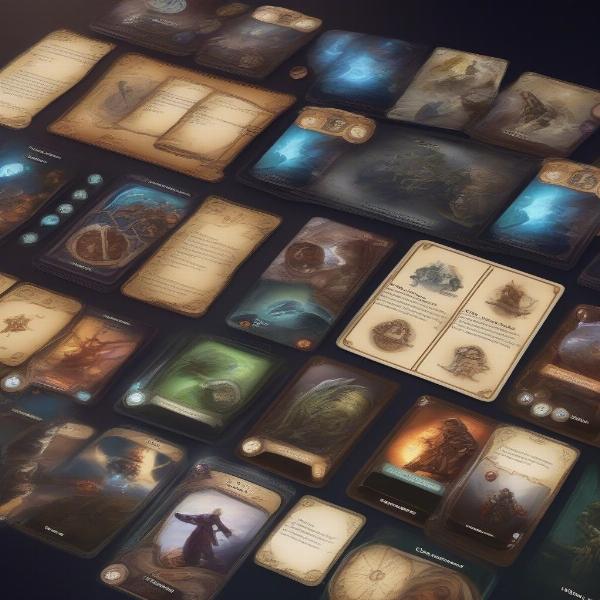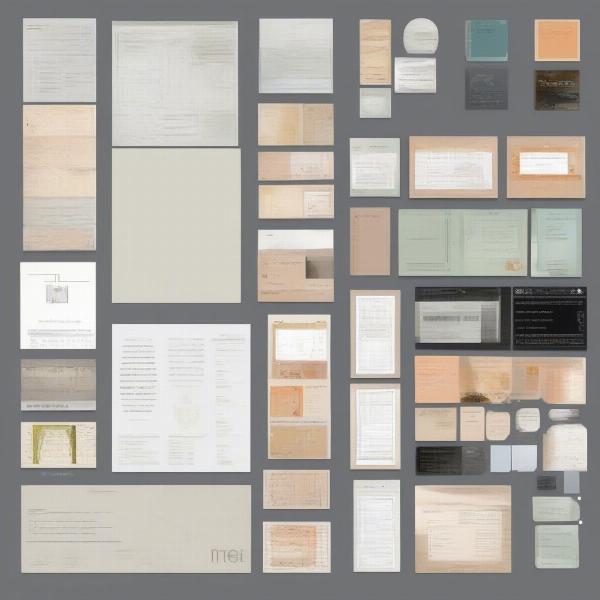Creating a custom card game can be incredibly rewarding, transforming a simple idea into a tangible, playable experience. Whether you’re aiming for a quick party game, a strategic duel, or a complex world-building adventure, this guide will equip you with the knowledge and steps to make your own playing card game.
So, you’ve got a brilliant idea for a card game swirling around in your head. But how do you bring it from concept to reality? Don’t worry, you don’t need to be a professional game designer to get started. This comprehensive guide will walk you through the entire process of How To Make Your Own Playing Card Game, from brainstorming core mechanics to designing the perfect cards.
Defining the Core Mechanics of Your Card Game
First, define the core mechanics—the rules and actions that drive gameplay. Ask yourself: What is the primary objective? How do players interact? What makes your game unique? Consider popular mechanics like trick-taking (like Spades), set collection (like Rummy), or deck-building (like Dominion). Understanding these fundamentals will form the backbone of your game. For instance, if you’re designing a trick-taking game, you’ll need to establish how tricks are won and how points are awarded. If it’s a set collection game, you’ll determine the types of sets players aim to collect and the conditions for achieving them.
 Designing the Core Mechanics of Your Card Game
Designing the Core Mechanics of Your Card Game
Is your game about outsmarting your opponents, collecting valuable sets of cards, or building a powerful deck? The answer to this question will shape the overall experience and guide your design choices. Think about games like “Would I Lie to You?”, where deception and wit are key, and how that translates into the game’s mechanics.
Developing Your Card Game’s Theme and Narrative
Once you have solid mechanics, develop a theme and narrative. This will give your game personality and flavor. Is it a fantasy adventure, a sci-fi thriller, or a historical drama? A compelling theme can elevate a simple card game into an immersive experience. Imagine a deck-building game where you’re not just collecting cards, but assembling a team of superheroes to save the world. The theme influences not just the visuals, but the mechanics too.
Think about your target audience. A game for children will have a different theme and complexity than a game designed for experienced gamers. You can even create a card game around questions, similar to “How Deep Will You Go?” card game questions, to encourage interaction and deeper conversations.
 Developing a Compelling Theme for Your Card Game
Developing a Compelling Theme for Your Card Game
Designing and Creating Your Cards
Now for the heart of how to make your own playing card game: designing the cards! Start by listing all the card types needed. Will you have character cards, action cards, resource cards, or a combination? Determine the information each card needs to convey. This might include card names, descriptions, values, or special abilities. Keep it clear, concise, and easy to understand. Remember, too many gigabytes taken up by card games can be a concern for some players, so optimize your digital designs if you’re going that route. Similar principles apply when figuring out how to go full screen on PC games – consider user experience and accessibility.
 Designing and Creating the Cards for Your Game
Designing and Creating the Cards for Your Game
Testing and Refining Your Card Game
Playtesting is crucial! Gather friends, family, or fellow gamers to test your prototype. Observe how they interact with the game, what they enjoy, and what they find confusing. Be open to feedback and iterate based on their experiences. This is where you’ll fine-tune the balance, fix any loopholes, and polish your game into a finished product. Testing helps identify potential issues like lag in digital games, prompting you to ask “why is my games so laggy?” and seek solutions to optimize performance.
Production and Distribution
Once you’re satisfied with your game, it’s time to think about production. You can print your cards professionally, use a print-on-demand service, or even create a digital version. Distribution options range from selling online to partnering with a publisher. The best approach depends on your budget and goals.
Expanding Your Game
Consider expansions and variations to keep your game fresh and engaging. New cards, rules, or even different game modes can add longevity and replayability.
Conclusion
Making your own playing card game is a journey of creativity and iteration. By following these steps, you can transform your initial idea into a playable reality. Remember to focus on clear mechanics, engaging themes, and thorough testing. Now go forth and create something amazing!
FAQ
- What are some free online resources for designing playing cards?
- How much does it typically cost to print a custom deck of cards?
- What are some popular card game mechanics I can incorporate?
- How do I protect my card game idea from being copied?
- What are some effective ways to market a self-published card game?
- How can I create a digital version of my card game?
- Where can I find playtesters for my card game?

